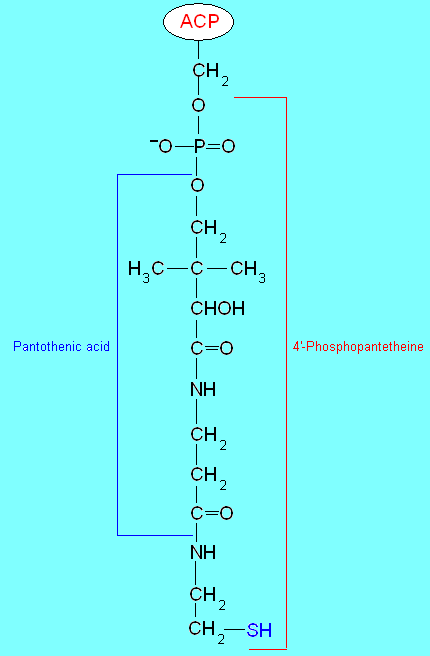|
Vitamin B5 (Pantothenic acid)
- Pantothenic acid is utilized in the biosynthesis of coenzyme A and is a component of 4'-phosphopantethein, which is the prosthetic group of acyl carrier protein (ACP), one of the several enzymes that form the fatty acid synthase complex. Coenzyme A and ACP are critical for the metabolism of carbohydrates and fats that lead to energy production. They are also involved in the synthesis of adrenal cortical hormones.

The phosphopantetheine group is covalently linked to the polypeptide chain through the hydroxyl group of
a serine residue. Only the hydroxyl carrying methylene group is depicted in the figure above. During fatty
acid synthesis the fatty acyl chain grows by two carbon units at a time and the thiol group of phosphopantetheine
forms a transient thioester bond with each activated malonyl group.
In coenzyme A the pantothenic acid is linked at its hydroxyl group to the 3'-phosphoadenosine diphosphate and at its
carboxyl group end is linked to b-mercaptoethylamine.

- Interactions: vitamin B5 works with carnitine and coenzyme Q in fatty acid transport across the mitochondrial membrane. Energy is produced as a result of fatty acid degradation in mitochondria.
- Health benefits: supplementation with vitamin B5 improves adrenal function and reduces arthritic pain.
Pantetheine (a more active form of vitamin B5) has a significant plasma-lipid lowering activity.
- Best food sources: brewer's yeast, organ meats, fish, poultry, whole grains,
legumes (broccoli, cauliflower), fruits (oranges, strawberries).
|
